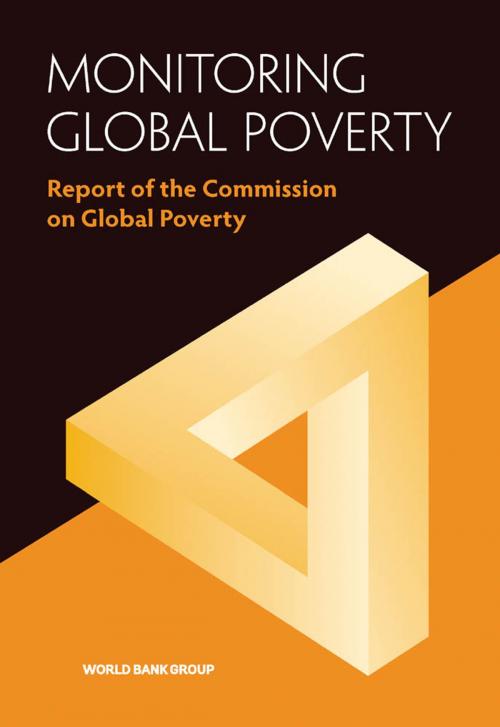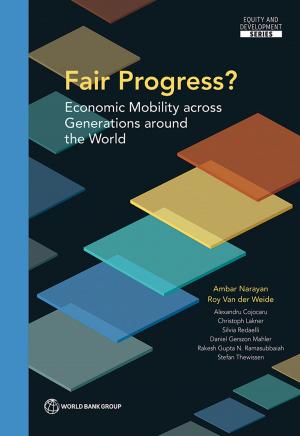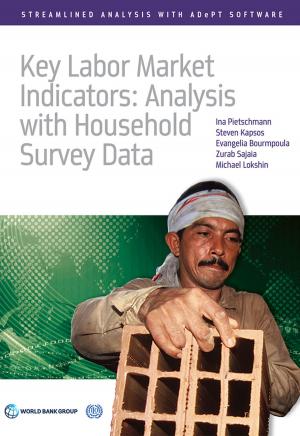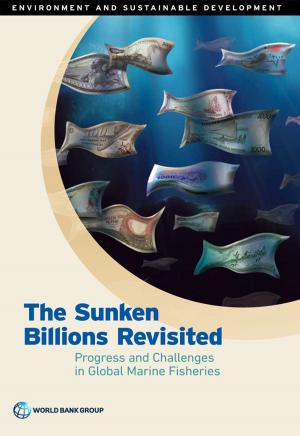Monitoring Global Poverty
Report of the Commission on Global Poverty
Business & Finance, Economics, International Economics, Economic Development| Author: | World Bank | ISBN: | 9781464809620 |
| Publisher: | World Bank Publications | Publication: | November 28, 2016 |
| Imprint: | World Bank Publications | Language: | English |
| Author: | World Bank |
| ISBN: | 9781464809620 |
| Publisher: | World Bank Publications |
| Publication: | November 28, 2016 |
| Imprint: | World Bank Publications |
| Language: | English |
In 2013, the World Bank Group announced two goals that would guide its operations worldwide. First is the eradication of chronic extreme poverty bringing the number of extremely poor people, defined as those living on less than 1.25 purchasing power parity (PPP)†“adjusted dollars a day, to less than 3 percent of the world’s population by 2030.The second is the boosting of shared prosperity, defined as promoting the growth of per capita real income of the poorest 40 percent of the population in each country. In 2015, United Nations member nations agreed in New York to a set of post-2015 Sustainable Development Goals (SDGs), the first and foremost of which is the eradication of extreme poverty everywhere, in all its forms. Both the language and the spirit of the SDG objective reflect the growing acceptance of the idea that poverty is a multidimensional concept that reflects multiple deprivations in various aspects of well-being. That said, there is much less agreement on the best ways in which those deprivations should be measured, and on whether or how information on them should be aggregated. Monitoring Global Poverty: Report of the Commission on Global Poverty advises the World Bank on the measurement and monitoring of global poverty in two areas: What should be the interpretation of the definition of extreme poverty, set in 2015 in PPP-adjusted dollars a day per person? What choices should the Bank make regarding complementary monetary and nonmonetary poverty measures to be tracked and made available to policy makers? The World Bank plays an important role in shaping the global debate on combating poverty, and the indicators and data that the Bank collates and makes available shape opinion and actual policies in client countries, and, to a certain extent, in all countries. How we answer the above questions can therefore have a major influence on the global economy.
In 2013, the World Bank Group announced two goals that would guide its operations worldwide. First is the eradication of chronic extreme poverty bringing the number of extremely poor people, defined as those living on less than 1.25 purchasing power parity (PPP)†“adjusted dollars a day, to less than 3 percent of the world’s population by 2030.The second is the boosting of shared prosperity, defined as promoting the growth of per capita real income of the poorest 40 percent of the population in each country. In 2015, United Nations member nations agreed in New York to a set of post-2015 Sustainable Development Goals (SDGs), the first and foremost of which is the eradication of extreme poverty everywhere, in all its forms. Both the language and the spirit of the SDG objective reflect the growing acceptance of the idea that poverty is a multidimensional concept that reflects multiple deprivations in various aspects of well-being. That said, there is much less agreement on the best ways in which those deprivations should be measured, and on whether or how information on them should be aggregated. Monitoring Global Poverty: Report of the Commission on Global Poverty advises the World Bank on the measurement and monitoring of global poverty in two areas: What should be the interpretation of the definition of extreme poverty, set in 2015 in PPP-adjusted dollars a day per person? What choices should the Bank make regarding complementary monetary and nonmonetary poverty measures to be tracked and made available to policy makers? The World Bank plays an important role in shaping the global debate on combating poverty, and the indicators and data that the Bank collates and makes available shape opinion and actual policies in client countries, and, to a certain extent, in all countries. How we answer the above questions can therefore have a major influence on the global economy.















